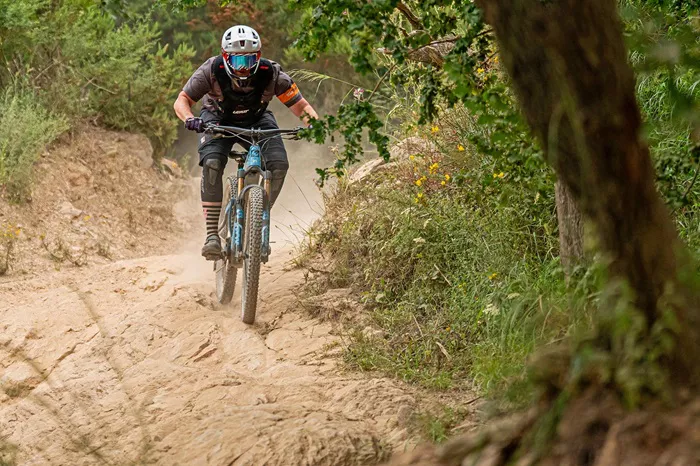Schwalbe is making waves in the mountain biking world with the introduction of their new Radial mountain bike tires, a significant leap in tire construction that promises to redefine traction on the trails. This groundbreaking design offers improved grip, even at higher pressures, transforming how riders experience their mountain bikes. Leading this innovation is the all-new Albert tire, the face of this pivotal shift, alongside a fresh tread for soft conditions and an updated version of the classic Magic Mary, all incorporating the new radial technology.
Designed to cater to a wide range of riders, from aggressive trail enthusiasts to all-mountain adventurers and enduro racers, the new Radial casing is available in both Trail and Gravity versions. The tires have already made their mark in the competitive scene, securing nine World Cup downhill (DH) victories, including two dominant wins by Amaury Pierron this year with significant time gaps.
The introduction of these tires is nothing short of a game-changer. After a month and a half of testing on various trails and in diverse conditions, the added grip has proven to be a substantial advantage, potentially altering the standard expectations for mountain bike tires.
Schwalbe Radial Trail & Gravity Tires: A Breakthrough in Tire Grip
Mountain bike tire development has long been driven by the quest for more grip. While lighter construction and faster-rolling rubber dominate the cross-country (XC) scene, the majority of mountain bikers prioritize grip above all else. However, achieving the perfect balance has been a challenge, as softer rubber can slow the ride or wear out too quickly.
Schwalbe has been at the forefront of this pursuit. A decade ago, they introduced the Super Gravity carcass, which reduced the number of tire layers for more flexibility but compromised puncture protection. Following this, they experimented with drastically lowering tire pressure using ProCore for added security, but this led to issues like snakebites, reduced cornering stability, and overly complicated setups. The engineers at Schwalbe have continued to search for a solution that maximizes the tire’s contact patch with the trail without sacrificing support or reliability.
Understanding the Radial Innovation
Traditional radial tires, like those used in cars, feature a main structure of fibers running straight up the sidewalls, across the tread, and down the opposite sidewalls, radially from the center of the wheel. This design offers excellent flex and a smooth ride but typically requires stiff belts of tough fibers or steel to support the tread.
On the other hand, bias-ply tires use a 90° crossing structure of fibers angled at 45° from the direction of travel, creating a lightweight, round-profile tire with low rolling resistance and predictable sidewall support.
Schwalbe’s new Radial mountain bike tires blend these two concepts. While radial tires are not new—they were first patented in 1914—they have never been widely adopted in bicycles. Schwalbe’s Radial tires, however, aren’t entirely radial; they feature a smaller angle between 10-20°, allowing them to harness the benefits of radial construction without the need for additional belt support.
According to Schwalbe, much of the performance enhancement comes from the shorter support fibers in the more-radial construction compared to conventional bias-ply tires. These fibers, which travel straighter across the tire casing, cover less distance in the direction of the tire’s movement, reducing the impact of sharp edges on the tire structure. In a traditional tire, a sharp edge might impact 100 fibers, but in Schwalbe’s new Radial tire, it would only affect 25.
This innovative approach by Schwalbe represents a significant advancement in mountain bike tire technology, offering riders a new level of performance and reliability on the trails.
related topics:
- How Do Rock Climbing Anchors Work?
- What To Expect When Skydiving?
- When And Why Surfing Became An Olympic Sport?

